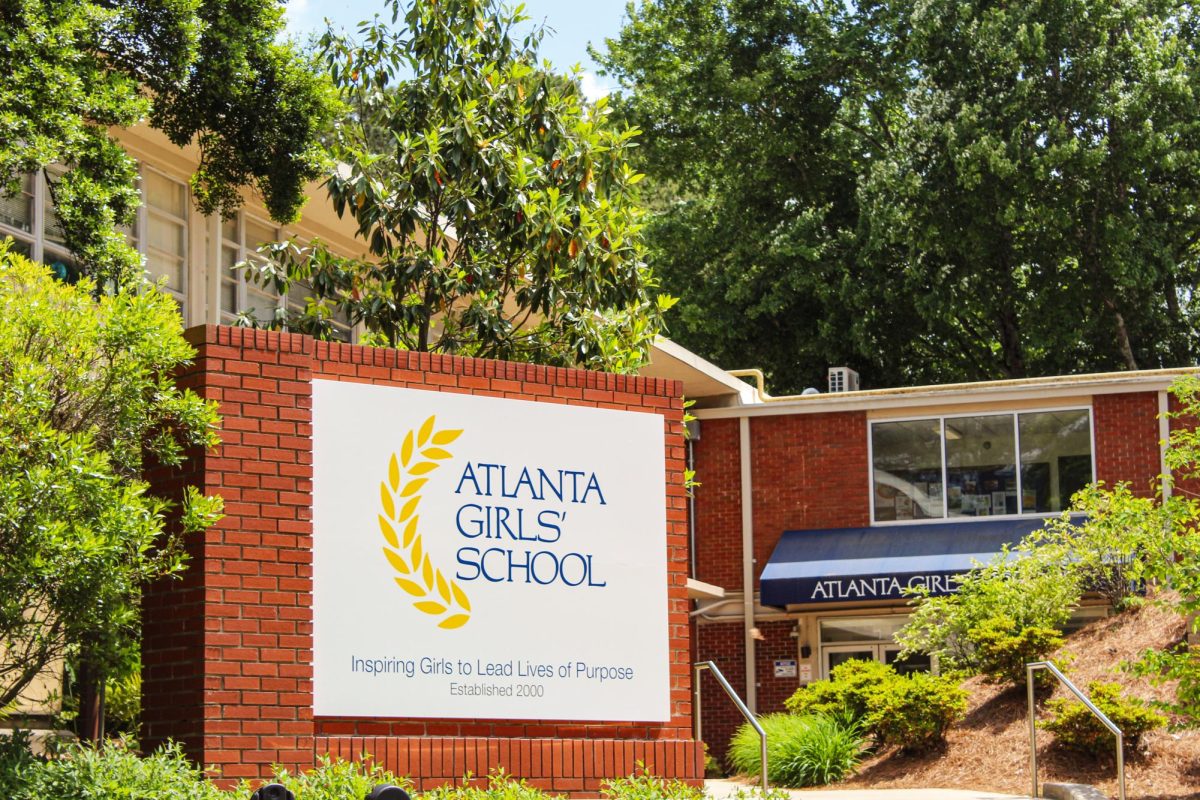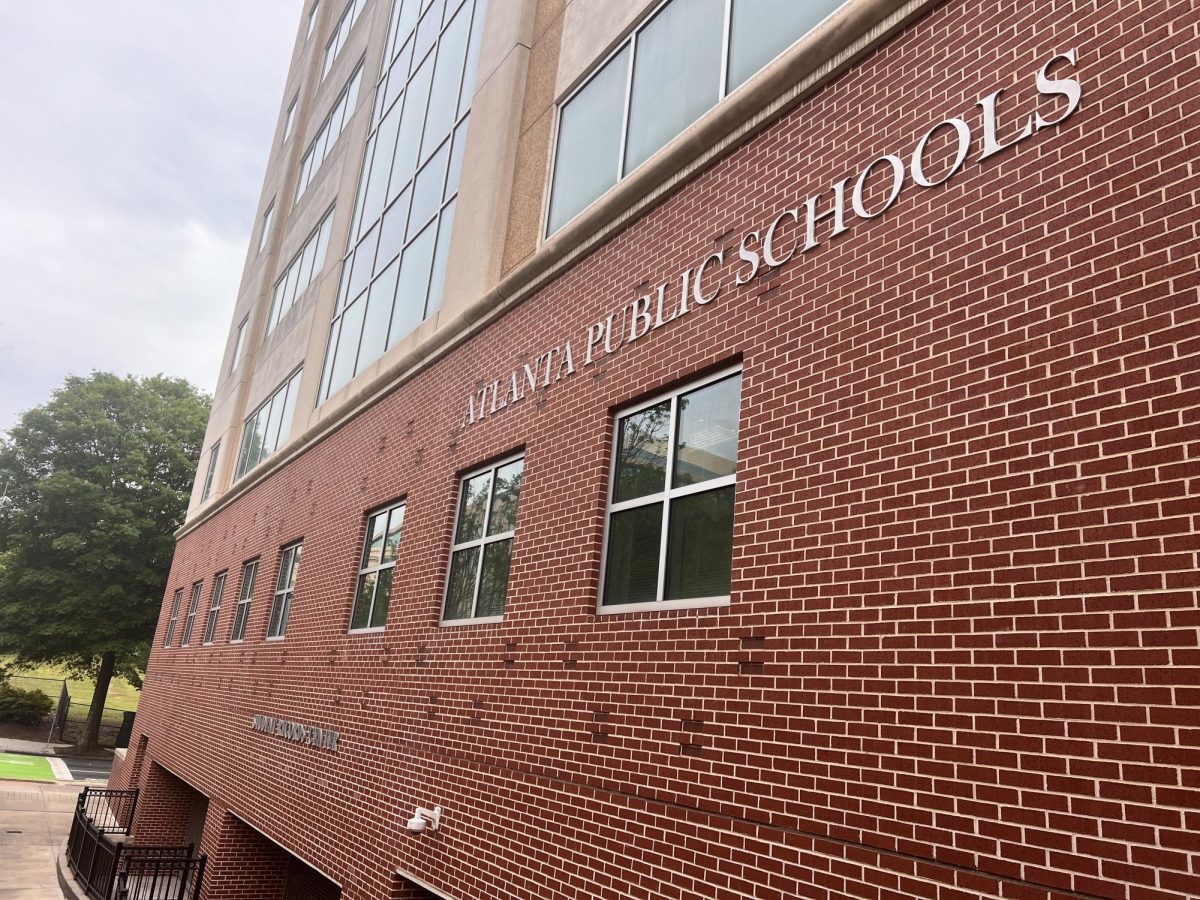By Anna Braxton and Emily Dean
As America’s rising obesity rate draws more attention, APS parents and students are calling for changes in the food served in school cafeterias.
According to the Centers for Disease Control and Prevention, 15 percent of children living in Georgia are obese, and the state will reach an obesity rate of 53.6 percent by 2030, and according to the U.S. Department of Agriculture, 31.6 million students in America bought school lunches in 2012. These numbers suggest that our route to reversing the obesity trend is a healthier school lunch.
Throughout APS, the number of Farm to School programs is growing, allowing students to gain access to fresh produce in the cafeteria.
Lunch Improvement Movement
Over the past several years, the APS Nutrition Department has made its menu more healthy and nutritional.The department collaborates with a company called Sodexo, which helps schools plan their menus.
According to APS nutrition director Marilyn Hughes, Sodexo provides all of the kitchen staff, as well as the food for the department.
Hughes said that 65 percent of all students eat school lunches daily. Within the past decade, the menu has not only gotten healthier but also fresher.
“APS’s Nutrition Department is committed to serving foods grown and produced in the southeastern United States,” Hughes wrote in an e-mail interview. “The foods are purchased by Sodexo from Sysco Foods, Fresh Point Produce and Borden’s Dairy. Commodity foods are provided by USDA.”
The department has also focused on offering healthier foods. For example they have eliminated fried food from the menu and started using whole-wheat products. Schools now feature a local “vegetable of the month” to encourage students to try new foods.
“For a couple of years Atlanta Public Schools has been practicing wellness,” cafe manager Marlo Mixon said. “So all of it’s healthy. We are really rolling into wheat. Everything you see out there is wheat.”
Hughes said the menus at Grady are based on the USDA New Meal Standards.
“APS Nutrition Department utilizes the USDA Food Based Menu Planning System to provide all schools meals with one-third of the recommended dietary allowances for lunch and one-fourth of the recommended dietary allowances for breakfast to ensure consistency of the dietary guidelines,” Hughes wrote.
Despite these standards, some Grady students do not think the cafeteria food is as nutritious as it should be.
“I didn’t think the school lunches were all that entirely healthy, and they don’t really look very nutritious,” junior Jasmine Lawrence said.
Farm to School
Over the past 13 years, Farm to School programs have popped up all over the country. Georgia Organics Farm to School director Erin Croom said there are now thousands in the country, and they exist in every state.
These programs allow schools and students to get involved in the growing of the food they consume and to receive their food from local farms rather than large farms in different parts of the country. Farm to School also allows students to learn about sustainable food preparation and healthy meal options.
In Georgia there are more than 200 schools involved in Farm to School programs, according to the USDA. APS Nutrition has been collaborating with Georgia Organics for nearly five years. With help from Georgia Organics and support from the surrounding community, schools such as Springdale Park and Morningside elementary schools created their own Farm to School programs.
“In Georgia, our program started about six years ago and we now have, about 40 districts that are purchasing local food, have school gardens and are working on chef-to-school programs where kids are doing hands-on interactive cooking,” Croom said.
Teresa Groshans started Schoolyard Sprouts about six years ago at the Morningside kindergarten campus, which is now SPARK Elementary School. She wanted to improve the quality of students’ lunches.
“Kids are very much more likely to try things that they have grown themselves,” she said. “They’re curious about it. They put that plant in the ground, they’ve watered that plant, they watched that plant grow and now they get to pick a leaf off it and taste it.”
With support from the surrounding businesses and parents at the school, the program expanded to Morningside. SPARK now has a full-time teacher dedicated to the garden. Springdale Sprouts also recently applied for a grant from the Captain Planet Foundation for Hope Hill Elementary.
“What we were trying to do is make every elementary school that feeds into Inman, and then into Grady, have some sort of edible education component so that all the kids in the cluster have it,” Groshans said.
Grady has its own small Farm to School program, which is not affiliated with Schoolyard Sprouts. According to AP Environmental Science teacher and Earth Club sponsor Korri Ellis, the Earth Club started a small garden, which is located between the new gym and the instructional suites, with the goal of teaching students how to grow their own food organically, meaning it does not use commercial fertilizers or pesticides.
“[Grady is] on the road to having a really good Farm to School lunch program,” Croom said.
APS has received awards for its efforts to improve school lunches.
“Last year, APS Nutrition was recognized with the Golden Radish Award for its participation in the 5 Million Meals campaign, a statewide effort sponsored by Georgia Organics to get more local food in schools,” Hughes wrote. “Our collaboration goals are to continue to increase the number of schools with gardens and increase the locally grown options in our cafeterias.”







